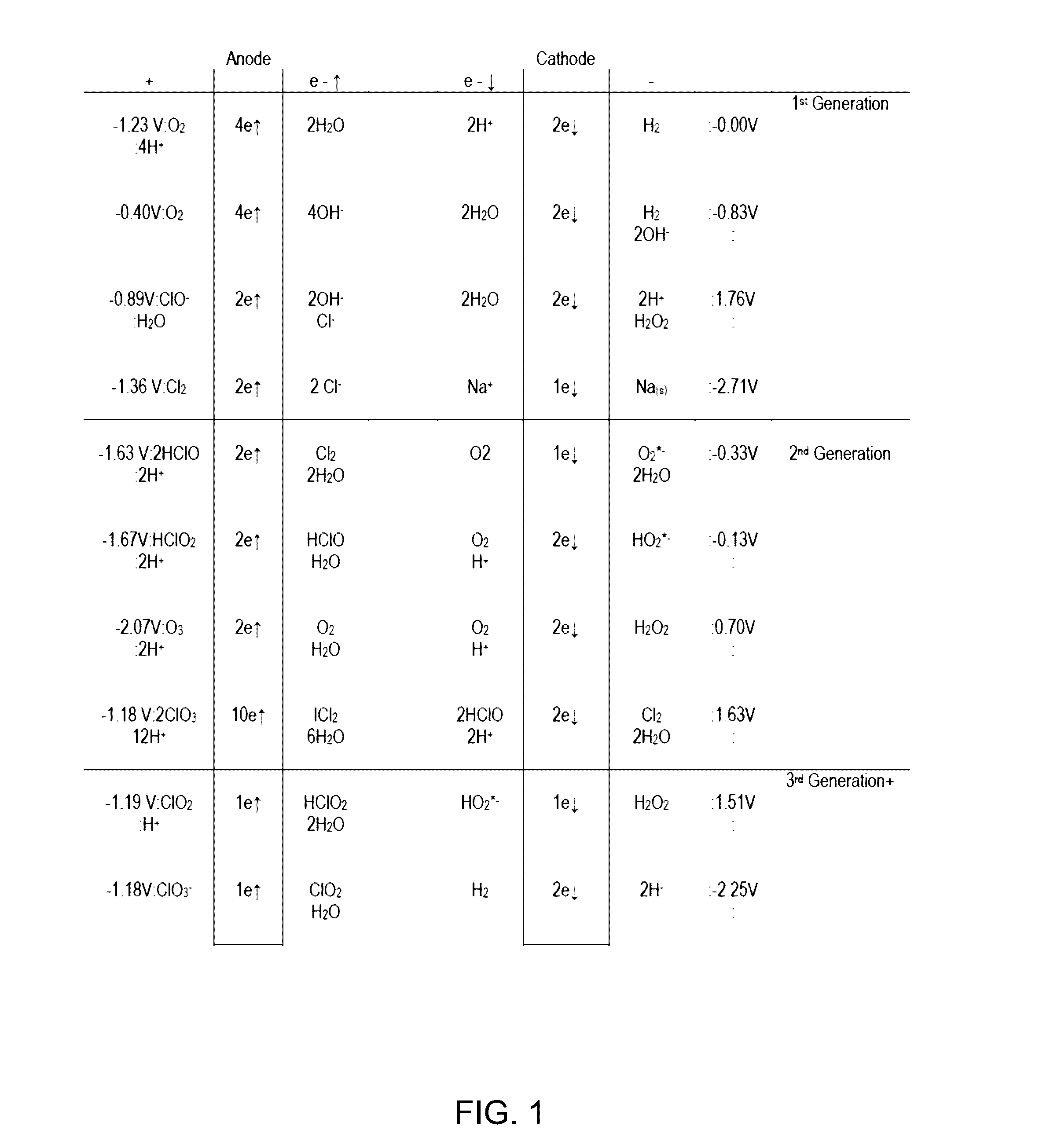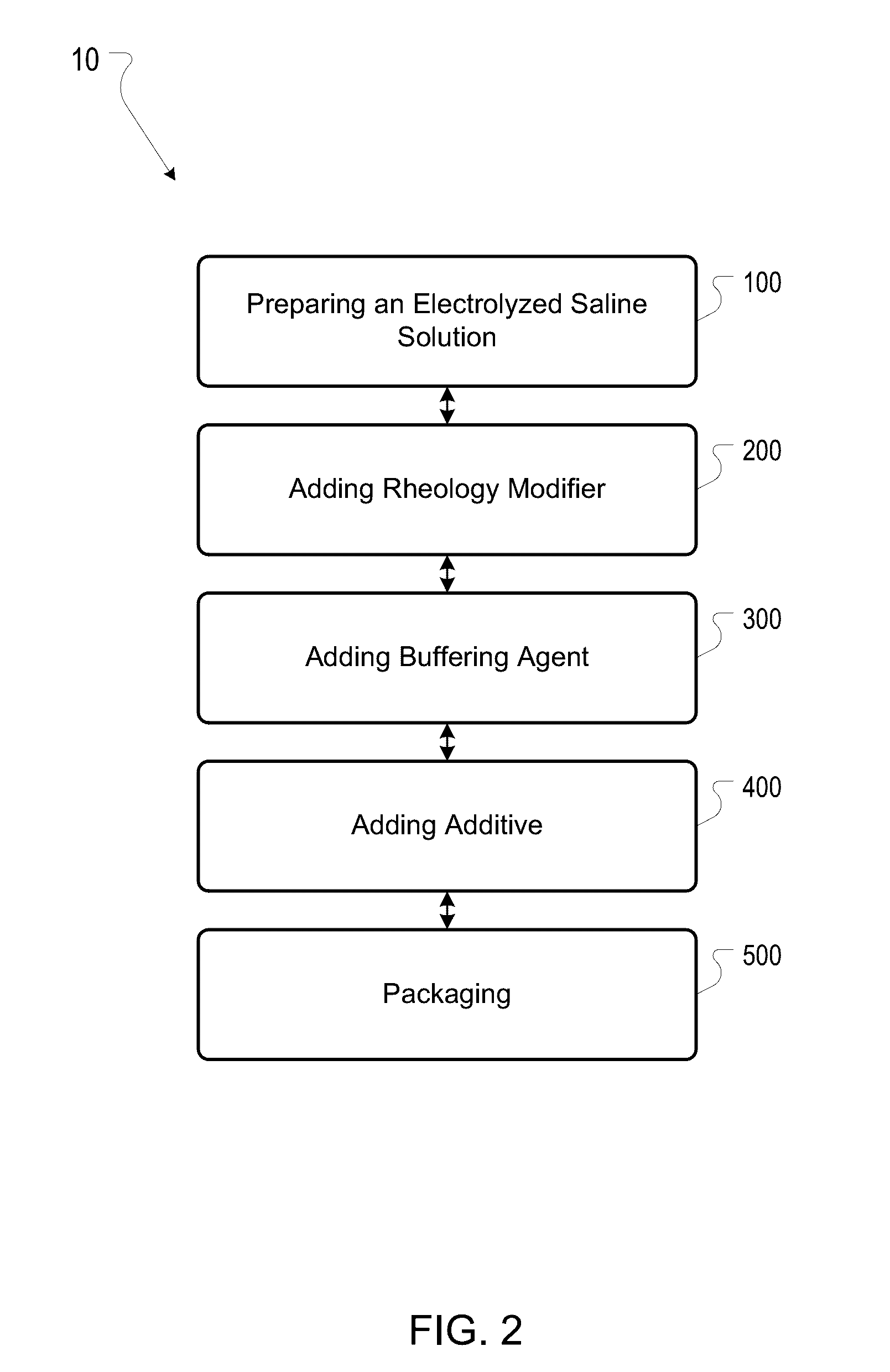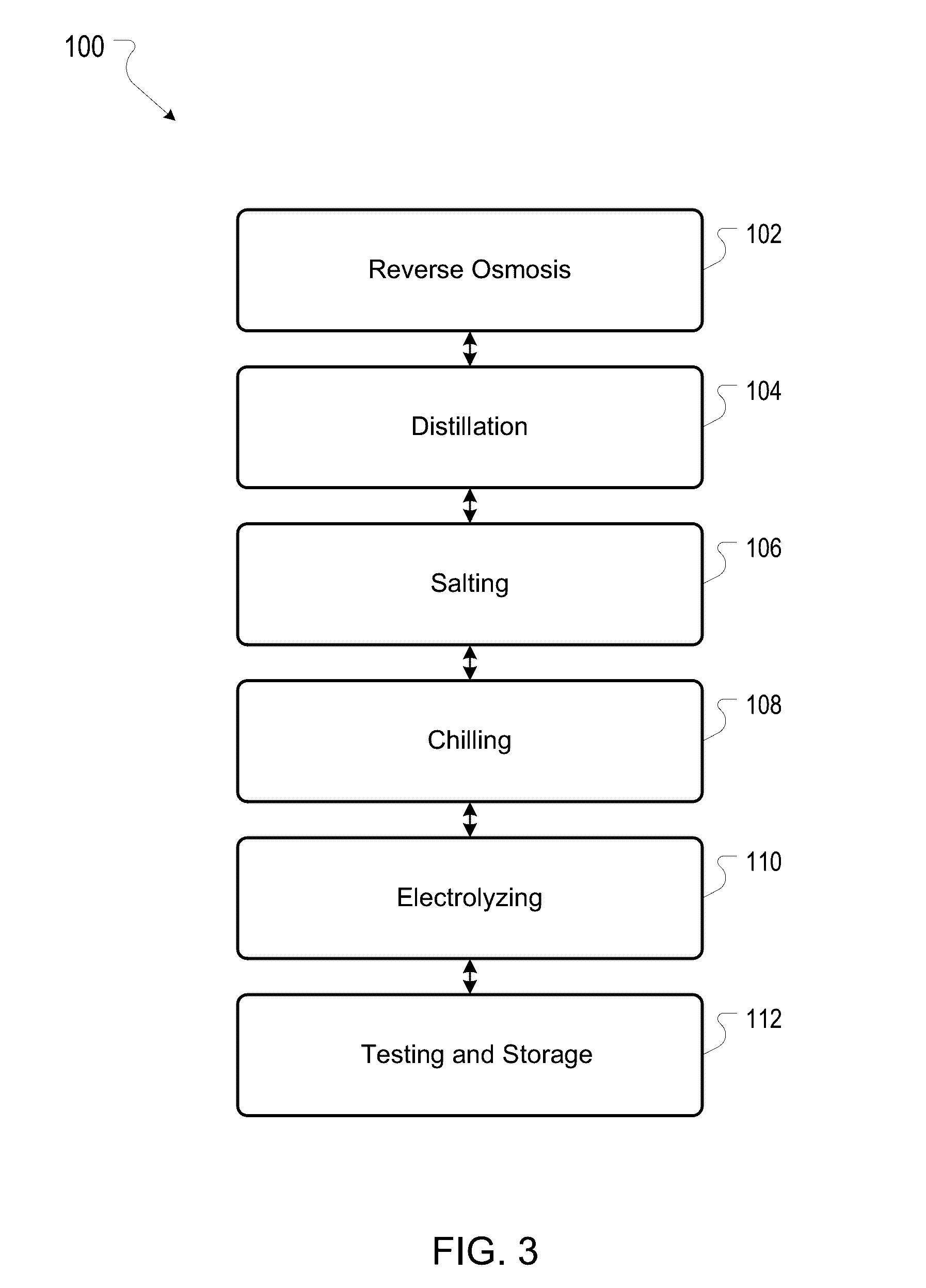Electrolyzed saline redox-balanced compositions and methods for treating skin conditions
- Summary
- Abstract
- Description
- Claims
- Application Information
AI Technical Summary
Benefits of technology
Problems solved by technology
Method used
Image
Examples
example 1
[0141]An electrolyzed solution was produced as described above and then characterized. Briefly, input water was subjected to reverse osmosis at a temperature of about 15-20° C. to yield purified water with about 8 ppm of total dissolved solids. The water was distilled to yield distilled water with about 0.5 ppm of total dissolved solids. Sodium chloride brine solution was added to the distilled water to yield a saline solution of about 2.8 grams sodium chloride per liter (about 0.28% sodium chloride). The saline solution was thoroughly mixed by recirculation and the salinity was confirmed by handheld conductivity meter. The saline solution was chilled to about 4.5 to 5.8° C. The chilled saline solution was then electrolyzed with platinum coated titanium electrodes with a current of 7 amps per electrode while the saline solution was circulated. The voltage was maintained between 9 and 12 volts. The saline solution was maintained between 4.5 to 5.8° C. during electrolysis. The resulti...
example 2
[0170]An electrolyzed saline solution sample was analyzed with for ROS content and concentration by fluorescent assay. The electrolyzed saline solution sample was prepared as described above in Example 1, with the exception that the saline solution contained 9.1 g / L of sodium chloride. The electrolyzed saline solution sample was tested for superoxides and hypochlorites as described herein. Specifically, the presence of superoxides was tested with the Nanodrop 3300 and R-phycoerytherin (R-PE) as the reagent and the presence of hypochlorites was tested with the Nanodrop 3300 and aminophenyl fluorescein (APF) as the reagent. The tests revealed the presence of both superoxides as well as hypochlorites.
[0171]The assay was carried out with the fluorescent dyes, R-Phycoerytherin (R-PE), Hydroxyphenyl fluorescein (HPF) and Aminophenyl fluorescein (APF). These fluorescent dyes are commonly used to determine relative ROS concentrations inside active biological systems and cells. The dyes chan...
example 3
[0174]Several different topical formulations were prepared with cross-linked acrylic acid polymers as a rheology modifier. The cross-linked acrylic acid polymers were sold under the tradename CARBOPOL™. In general, the topical formulations were prepared by first preparing electrolyzed saline solution (ESS) as described above with a saline solution comprising 0.9 g / L of sodium chloride. A small amount of concentrated sodium hydroxide was then added to the electrolyzed saline and the cross-linked acrylic acid polymer was combined. In some cases, the electrolyzed saline solution and the cross-linked acrylic acid polymer were first combined and then concentrated sodium hydroxide was added. The initial and final chlorine levels of the topical formulations were also measured. The different test formulations are listed below as Formulation A to P.
[0175]Formulation A was prepared by combining 75 μL of 50% NaOH with 40 ml of ESS. Chlorine levels of this combination were measured to be 24 ppm...
PUM
 Login to View More
Login to View More Abstract
Description
Claims
Application Information
 Login to View More
Login to View More - R&D
- Intellectual Property
- Life Sciences
- Materials
- Tech Scout
- Unparalleled Data Quality
- Higher Quality Content
- 60% Fewer Hallucinations
Browse by: Latest US Patents, China's latest patents, Technical Efficacy Thesaurus, Application Domain, Technology Topic, Popular Technical Reports.
© 2025 PatSnap. All rights reserved.Legal|Privacy policy|Modern Slavery Act Transparency Statement|Sitemap|About US| Contact US: help@patsnap.com



